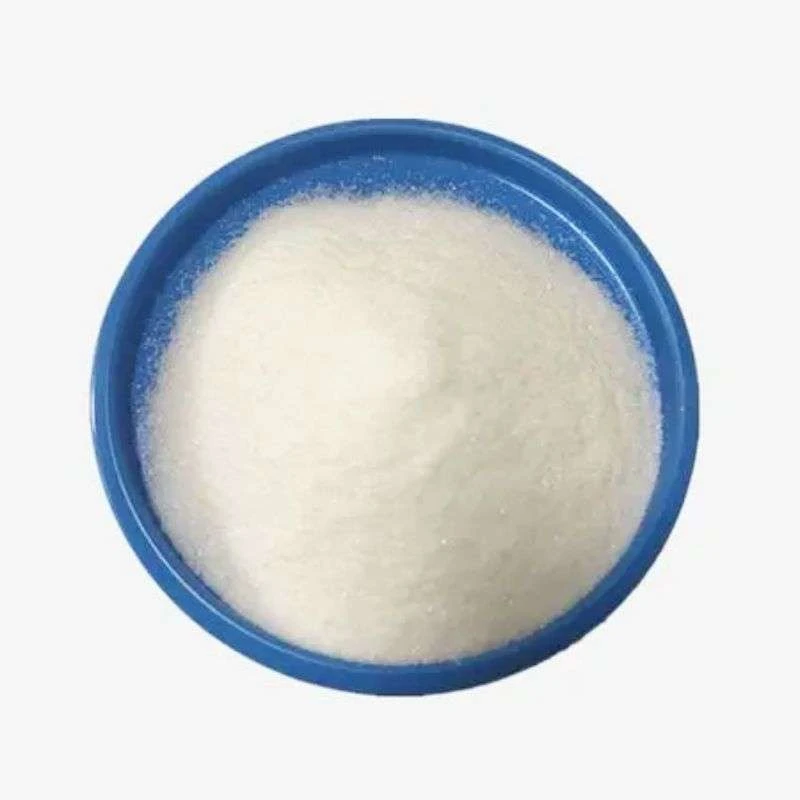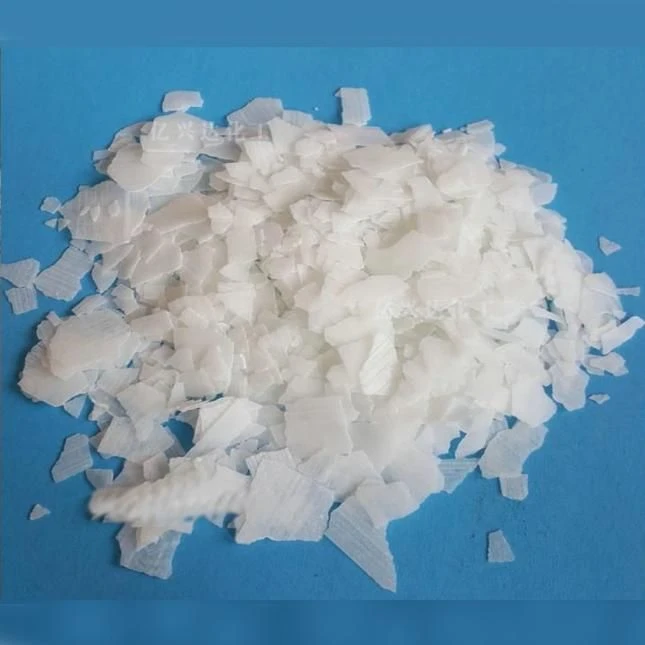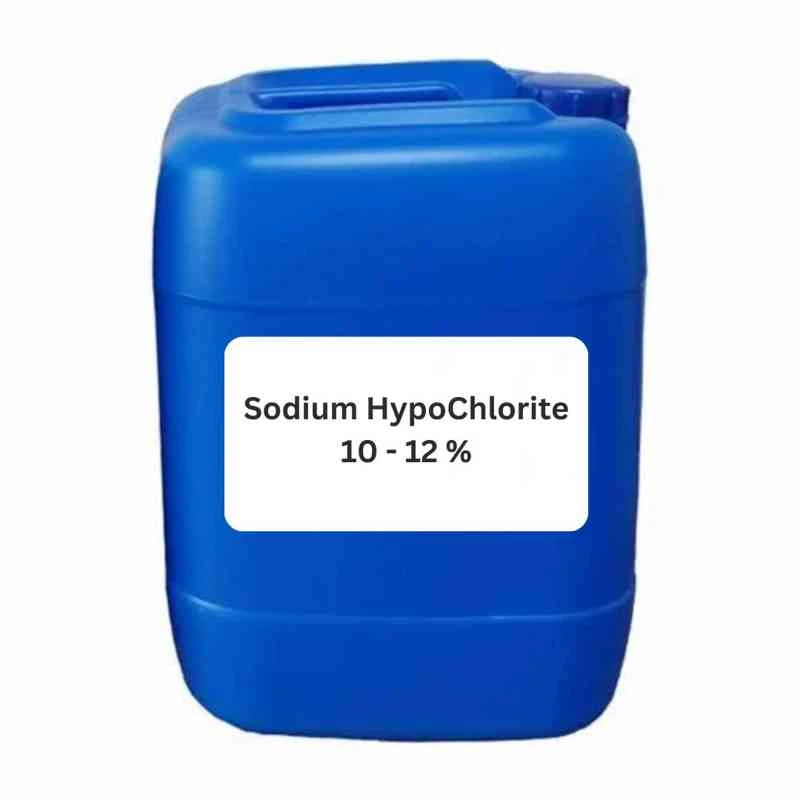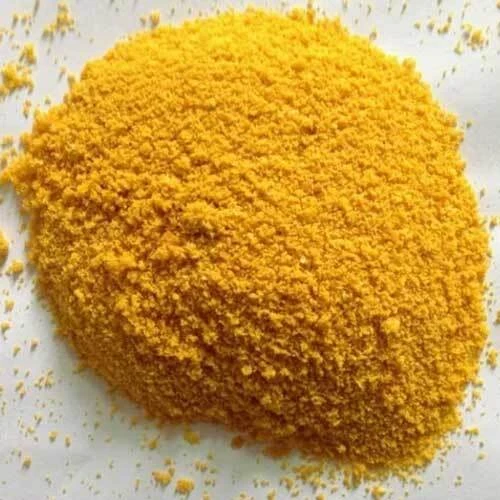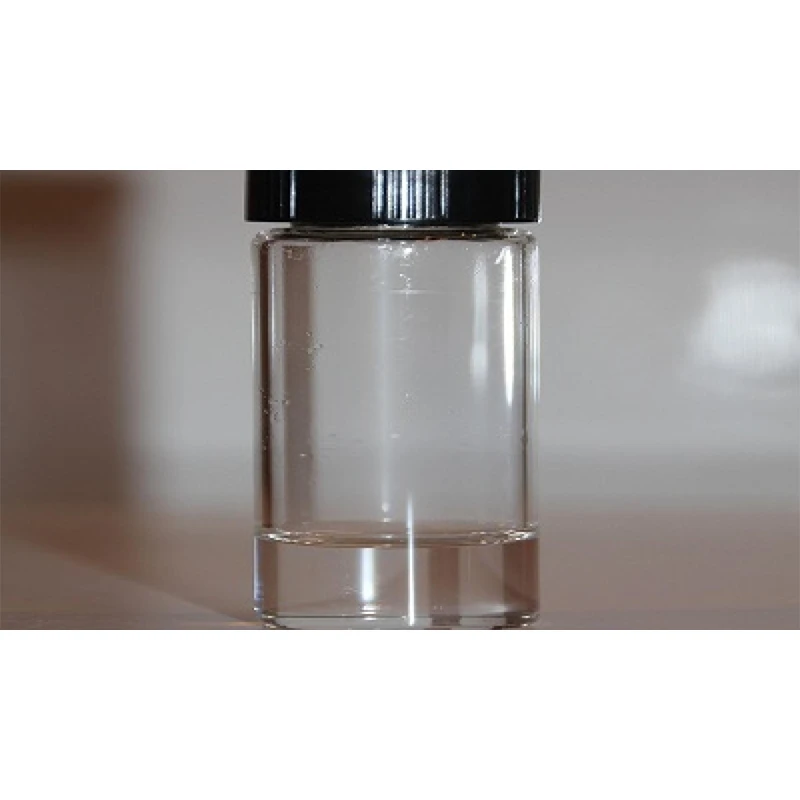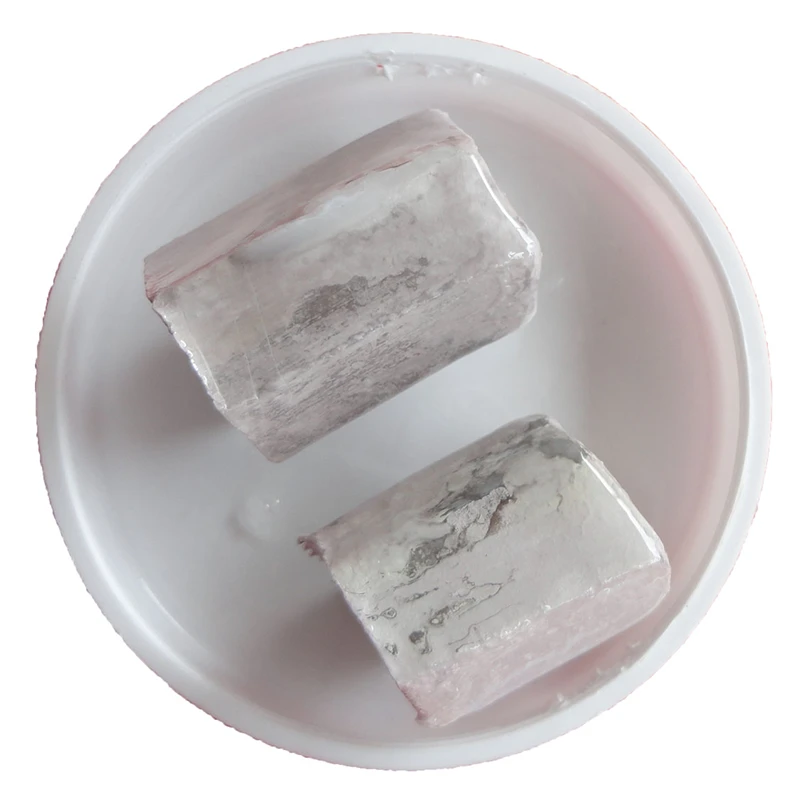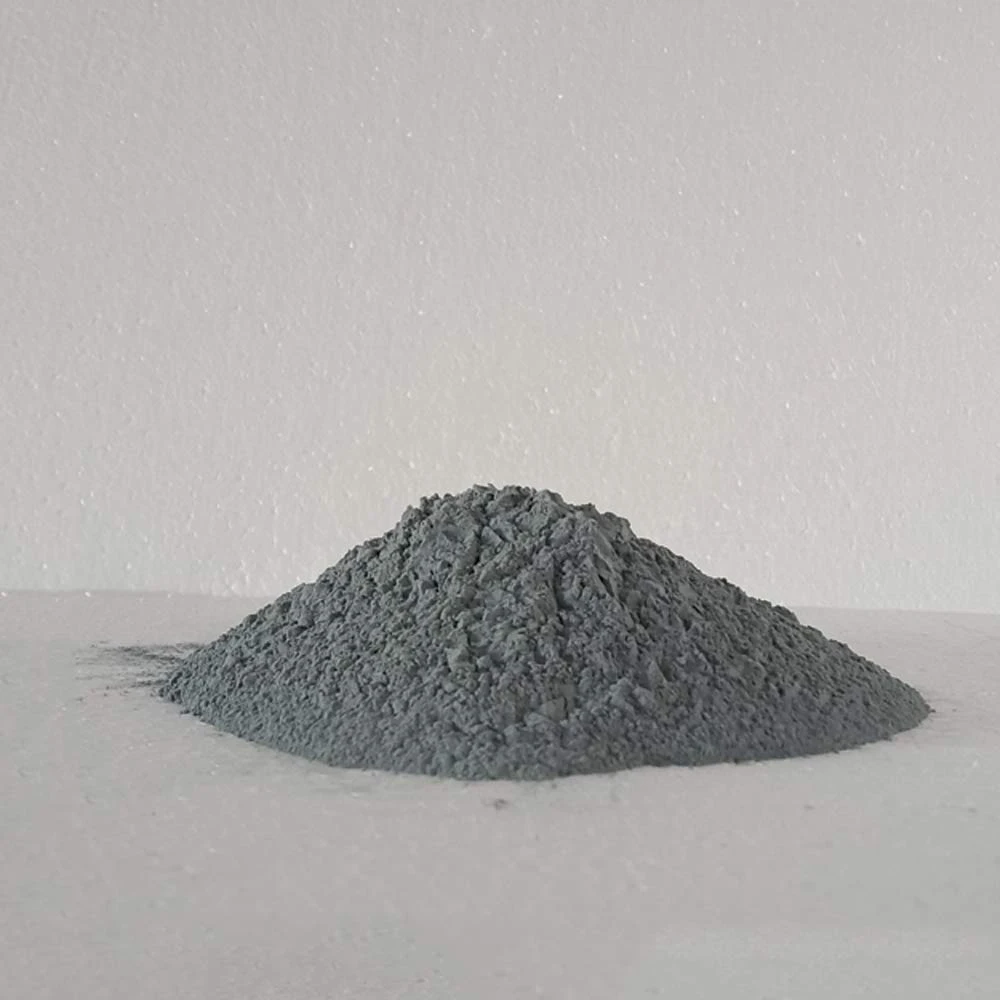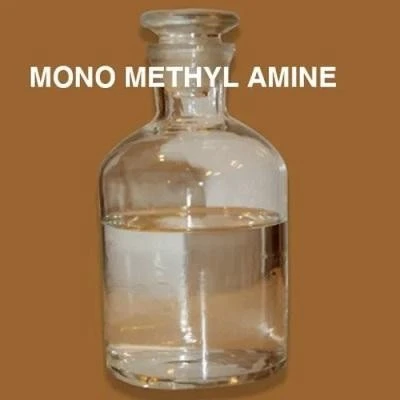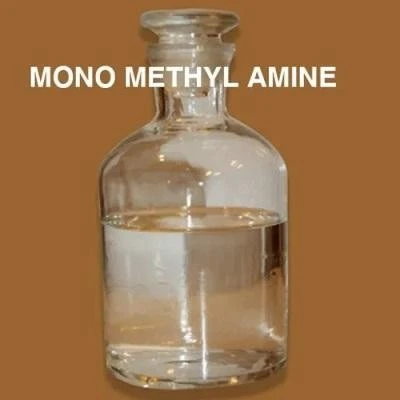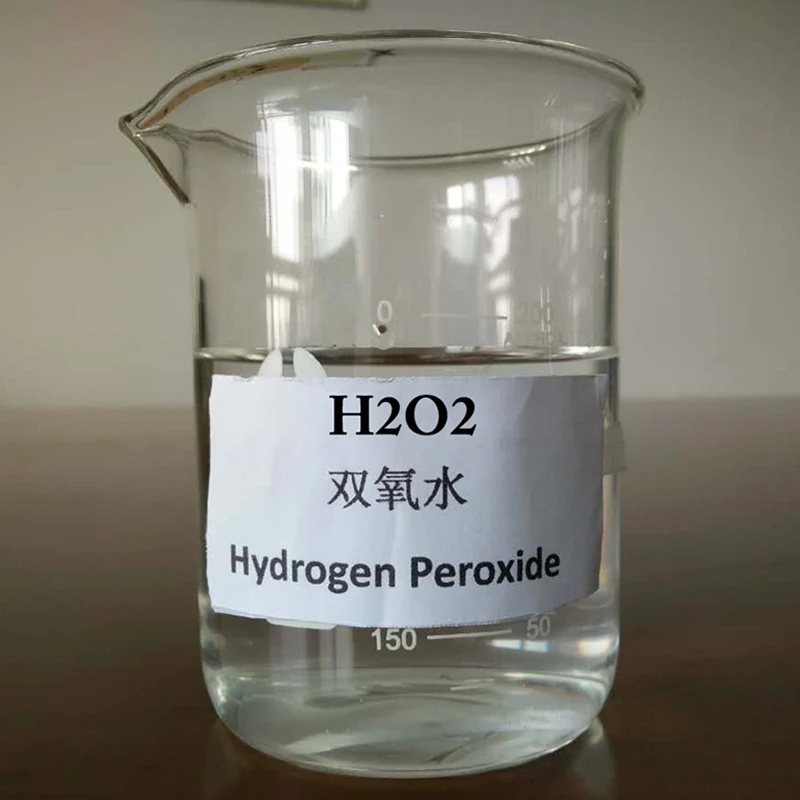


Spirodiclofen Insecticide: Effective Mite & Pest Control
The global agricultural landscape faces persistent challenges from ever-evolving pest populations. Among these, mites and certain insect pests inflict significant economic damage, threatening crop yields and quality. In this dynamic environment, advanced solutions are critical for sustainable food production. Spirodiclofen, a revolutionary acaricide and insecticide, stands out as a cornerstone of modern pest management strategies. It represents a paradigm shift in controlling economically important pests, offering unparalleled efficacy and a favorable environmental profile.
Industry Trends and the Evolving Pest Landscape
The demand for effective and environmentally responsible crop protection solutions is escalating. Driven by climate change, increased global trade, and the development of pest resistance to traditional chemistries, the agricultural sector urgently seeks innovative compounds. Mite infestations, in particular, continue to be a major concern across diverse crops, from fruits and vegetables to ornamentals and field crops. Traditional organophosphates and carbamates often face resistance issues and stricter regulatory scrutiny. This trend has paved the way for novel chemistries like spirodiclofen, which offers a distinct mode of action, providing a vital tool in resistance management programs.
According to recent industry reports, the global acaricides market is projected to grow significantly, fueled by the rising prevalence of mite infestations and the increasing adoption of integrated pest management (IPM) practices. Data from Verified Market Research suggests the Acaricides Market size was valued at USD 1.55 Billion in 2020 and is projected to reach USD 2.37 Billion by 2028, growing at a CAGR of 5.5% from 2021 to 2028. Compounds like spirodiclofen, known for their efficacy against key mite species and excellent residual control, are central to this growth. This strong market trajectory underscores the continuous need for advanced solutions like spirodiclofen insecticide to protect global food security and maintain agricultural productivity. Farmers and agricultural enterprises worldwide are increasingly prioritizing effective and sustainable pest control, driving the adoption of high-performance products like spirodiklofen that offer both superior efficacy and environmental compatibility.
Understanding Spirodiclofen: Technical Parameters and Unmatched Efficacy
Spirodiclofen is a potent tetronic acid derivative, belonging to the ketoenol group of insecticides/acaricides. Its unique mode of action involves the inhibition of lipid biosynthesis, specifically affecting acetyl CoA carboxylase (ACC). ACC is a crucial enzyme responsible for the production of fatty acids, which are vital components for energy storage, membrane synthesis, and various metabolic processes in pests. This disruption of fat metabolism leads to irreversible metabolic and physiological damage in mites and insect pests, resulting in their eventual demise. It is particularly effective against all developmental stages of mites, including eggs, nymphs, and adults, offering comprehensive control. The compound exhibits strong translaminar activity, meaning it penetrates leaf surfaces to provide protection on both upper and lower sides, reaching pests that might otherwise be missed by surface-applied treatments. This ensures thorough coverage and sustained protection, even in dense crop canopies. The low volatility of spirodiclofen further contributes to its long residual activity on the plant surface, providing extended protection against re-infestation.
Key Specifications of Spirodiclofen
As a leading supplier of high-quality agricultural chemicals, DFC Chempest ensures that our Spirodiclofen products adhere to the strictest global standards. Our offerings, including the widely used spirodiclofen 24 sc formulation, are characterized by their purity, stability, and consistent performance. We provide products that are not only effective but also reliable, ensuring maximum value for our agricultural partners. The high purity of our technical grade spirodiclofen minimizes impurities, leading to a more consistent and potent active ingredient in the final formulation. This commitment to quality translates directly into superior field performance and enhanced crop protection.
| Parameter | Specification (for Technical Grade Spirodiclofen) | Typical Value (DFC Chempest) |
|---|---|---|
| CAS No. | 148477-71-8 | 148477-71-8 |
| Molecular Formula | C21H24O4 | C21H24O4 |
| Molecular Weight | 340.4 g/mol | 340.4 g/mol |
| Purity (HPLC) | ≥ 95% | ≥ 97% |
| Appearance | White to light yellow powder | White crystalline powder |
| Melting Point | 120-125 °C | 121-123 °C |
| Vapor Pressure | -6 Pa (at 20 °C) | Extremely low |
| Solubility (Water) | Very low ( | 0.005 mg/L (at 20 °C) |
| Solubility (Organic Solvents) | Soluble in acetone, ethyl acetate, xylene | Good solubility in common organic solvents |
| Formulation Types | Suspension Concentrate (SC), Wettable Powder (WP) | Primarily SC (e.g., spirodiclofen 24 sc) |
| Acute Oral LD50 (Rat) | > 2500 mg/kg | > 2500 mg/kg (Low toxicity) |
| Stability in Storage | Stable under normal conditions | Excellent, typically 2-3 years shelf life |

The Meticulous Manufacturing Process of Spirodiclofen
The production of high-quality spirodiclofen involves a sophisticated multi-stage chemical synthesis and formulation process, adhering strictly to international quality and environmental standards such as ISO 9001 for Quality Management Systems and ISO 14001 for Environmental Management Systems. Our commitment to excellence ensures a product of unparalleled purity and consistent efficacy, providing growers with a reliable solution for pest control. The entire manufacturing process is subject to rigorous oversight and continuous improvement initiatives to maintain our high standards.
Process Flow Explained: From Raw Material to Finished Product
The manufacturing of spirodiclofen begins with meticulously sourced raw materials, typically involving various organic precursors. The overall process can be broadly categorized into several critical phases, each with specific control points to ensure quality and efficiency:
-
Precursor Synthesis and Intermediate Production:
This initial phase involves the chemical synthesis of key intermediate compounds necessary for the final spirodiclofen structure. This often includes reactions like esterifications, condensations, and cyclizations, where specific catalysts and controlled temperature/pressure conditions are crucial. Precision in material purity at this stage is paramount, as even minor impurities can significantly impact the yield and quality of the final product. Raw materials undergo stringent quality checks upon arrival, ensuring they meet our internal and international purity standards (e.g., through GC-MS or HPLC analysis). Our supply chain for these precursors is vetted to ensure consistency and reliability, minimizing risks in the initial production stages.
-
Core Spirodiclofen Synthesis (Key Reaction Step):
This is the pivotal stage where the characteristic spiro-fused tetronic acid ring system, unique to spirodiclofen and its analogues, is formed. This step often involves highly selective chemical reactions, requiring precise control over reaction parameters such as pH, temperature, reaction time, and solvent systems. Our advanced reactor systems ensure optimal reaction kinetics and maximum conversion rates. Real-time monitoring of critical process parameters (CPPs) is employed to maintain consistency, ensuring batch-to-batch uniformity. Safety protocols are rigorously followed during these reactions, given the nature of chemical synthesis.
-
Purification and Isolation:
Following synthesis, the crude spirodiclofen product contains various by-products and unreacted raw materials. This mixture undergoes a series of purification steps, which may include:
- Extraction: Using specific solvents to separate the desired compound from impurities.
- Crystallization: Carefully controlled cooling and solvent evaporation to form pure spirodiclofen crystals. This step is critical for achieving high purity levels (typically ≥97% for technical grade), contributing to the product's long-term stability and efficacy.
- Filtration & Drying: Separating the solid product from the liquid phase and removing residual solvents through vacuum drying or other advanced drying techniques to achieve the desired moisture content. The drying process is optimized to prevent degradation and ensure a free-flowing powder suitable for subsequent formulation.
-
Formulation (e.g., Spirodiclofen 24 SC):
Once the technical grade spirodiclofen is purified, it is then formulated into end-use products like spirodiclofen 24 sc (Suspension Concentrate). This involves finely grinding the active ingredient to achieve optimal particle size (typically 1-5 microns) and dispersing it evenly in a liquid medium (usually water) along with various excipients, dispersants, stabilizers, and anti-foaming agents. The goal is to create a stable, homogeneous suspension that can be easily mixed with water by the end-user without settling, clumping, or clogging spray nozzles. The particle size distribution is meticulously controlled using advanced milling technologies to ensure optimal spray coverage and biological efficacy. Our SC formulations are tested against FAO (Food and Agriculture Organization of the United Nations) specifications for suspension stability, wettability, and pourability, guaranteeing their performance in diverse agricultural settings.
-
Quality Control & Packaging:
Throughout every stage, rigorous quality control checks are performed. This includes in-process testing and final product analysis. Key tests include:
- Active Ingredient Content (HPLC): Ensuring the exact concentration of spirodiclofen in every batch.
- Physical Properties: pH, density, viscosity, and particle size distribution for SC formulations are carefully measured to ensure optimal handling and application characteristics.
- Stability Tests: Accelerated storage tests (e.g., at 54°C for 14 days) are conducted to predict and confirm the product's shelf life, which is typically 2-3 years under proper storage conditions, ensuring long-term viability for farmers.
- Efficacy Bioassays: Small-scale biological tests are occasionally performed to confirm the product's activity against target pests, providing an extra layer of assurance regarding its effectiveness.
Finally, the finished product is carefully packaged into appropriate container111s, labeled according to international regulations (e.g., GHS, local pesticide registration requirements), and prepared for distribution. Our packaging materials are chosen for their durability and ability to maintain product integrity throughout the supply chain, protecting the quality of spirodiklofen until it reaches the end-user.
(A visual representation of the process flow is crucial for clear understanding. For illustrative purposes within this text, consider the following simplified diagram)
Manufacturing Process Flow Diagram for Spirodiclofen:
Raw Materials Receiving & QC → Intermediate Production (Reaction 1) → Core Synthesis Reactor (Reaction 2) → Primary Purification (Extraction/Filtration) → Crystallization & Secondary Purification → Drying → Technical Product QC → Milling & Formulation (e.g., Spirodiclofen 24 SC) → Final Product QC & Packaging
The dedication to such a robust manufacturing process ensures that DFC Chempest's spirodiclofen offers superior performance and reliability, meeting the stringent demands of modern agriculture across various industries where effective pest control is paramount.
Application Scenarios and Industry Use
The versatility of spirodiclofen insecticide makes it an indispensable tool across a broad spectrum of agricultural applications. Its primary target pests are mites (Tetranychidae, Eriophyidae, Tarsonemidae families) and some whitefly species, which are notorious for causing significant damage to crops globally by feeding on plant sap, transmitting viruses, and reducing photosynthetic efficiency. Its unique mode of action makes it effective even against populations that have developed resistance to other chemical classes, thereby safeguarding crop yields and quality.
Key Applicable Industries and Crops:
- Fruits: Citrus (oranges, lemons, grapefruit), pome fruits (apples, pears), stone fruits (peaches, plums, cherries), grapes, strawberries, and other berries. Spirodiclofen effectively controls citrus red mites, European red mites, two-spotted spider mites, and rust mites in these crops. It helps preserve fruit quality and yield, ensuring a profitable harvest. Its long residual activity is particularly beneficial in perennial crops where sustained protection is needed.
- Vegetables: Tomatoes, cucumbers, peppers, eggplants, beans, melons, and cucurbits (squash, zucchini). It provides excellent control against spider mites, broad mites, and whiteflies (especially Bemisia tabaci and Trialeurodes vaporariorum), which are known to transmit devastating viral diseases that can wipe out entire harvests. The translaminar movement of spirodiclofen is vital for reaching mites and whiteflies on the undersides of leaves, a common hiding spot.
- Ornamentals: Flowers (roses, carnations, chrysanthemums), shrubs, and nursery plants. Critical for maintaining aesthetic value and plant health in commercial nurseries and greenhouses, where mite infestations can quickly spread and cause significant losses, impacting the ornamental horticulture industry. Its gentle profile on many beneficial insects also makes it suitable for integrated pest management in high-value ornamental crops.
- Field Crops: Cotton, soybeans (though less commonly a primary choice, can be used for specific mite pressures). In these broad-acre crops, timely and effective mite control can prevent substantial yield losses, contributing to the economic viability of large-scale farming operations.
- Other Specialty Crops: Spirodiclofen also finds application in crops like hops, almonds, and avocados where mite pressure can be significant and requires targeted solutions.
Its effectiveness against all life stages (eggs, nymphs, and adults) ensures comprehensive pest eradication, preventing future generations from developing. This proactive control leads to sustained pest suppression and a reduction in the overall pest population, making spirodiclofen particularly valuable for early intervention and long-term control strategies within modern agricultural systems.
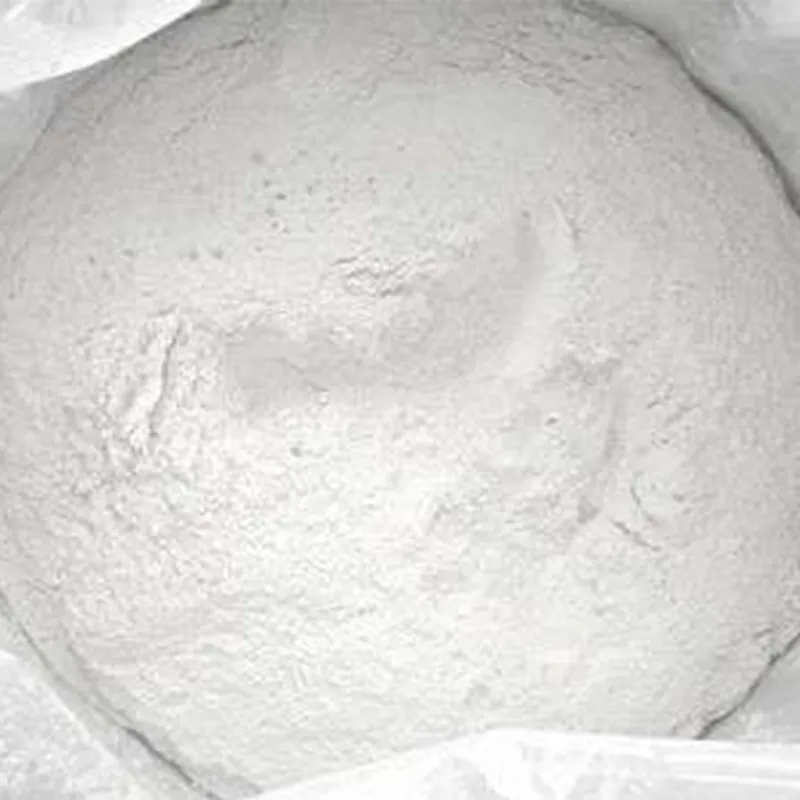
Technical Advantages of DFC Chempest's Spirodiclofen
DFC Chempest's spirodiclofen stands apart due to several distinct technical advantages that translate directly into superior performance and grower benefits, ensuring optimal crop health and yield protection:
- Unique Mode of Action (MoA): As a lipid biosynthesis inhibitor (IRAC Group 23), spirodiclofen offers a novel MoA, making it an excellent rotation partner in resistance management programs. This helps preserve the efficacy of other chemistries and prolongs the lifespan of valuable pesticides, a critical aspect in sustainable pest control. Its non-neurotoxic action also contributes to its favorable profile for beneficial insects, supporting biodiversity in agricultural ecosystems.
- Broad Spectrum Acaricidal Activity: Highly effective against a wide range of economically significant mite species, including spider mites, rust mites, and broad mites, which are often difficult to control with conventional products. This broad effectiveness simplifies pest management decisions for growers.
- Ovicidal and Larvicidal/Nymphicidal Action: Its ability to kill eggs and juvenile stages (nymphs/larvae) ensures that the pest cycle is broken early, preventing future population explosions. This proactive control leads to sustained pest suppression and reduces the need for repeated applications, saving time and resources.
- Excellent Residual Activity: Spirodiclofen provides long-lasting control, reducing the need for frequent applications and thus saving labor and material costs. Its translaminar movement ensures that even pests feeding on the underside of leaves are exposed to the active ingredient, extending the period of protection. Field trials consistently show residual activity extending for several weeks, depending on environmental conditions.
- Good Crop Safety: When applied according to label instructions, spirodiclofen is safe for a wide variety of crops, minimizing the risk of phytotoxicity (plant damage) and ensuring healthy plant growth. This is crucial for high-value crops where even minor damage can lead to significant economic losses.
- Favorable Environmental Profile: It exhibits low toxicity to beneficial insects, predatory mites, and pollinators (e.g., bees), making it highly compatible with Integrated Pest Management (IPM) programs. This aligns with modern sustainable agricultural practices and reduces ecological impact. Its low water solubility and low vapor pressure further contribute to its environmental friendliness, minimizing runoff and atmospheric dispersal.
- High-Quality Formulation (e.g., Spirodiclofen 24 SC): Our Suspension Concentrate (SC) formulation ensures easy mixing, uniform spray coverage, and excellent suspension stability in the tank, leading to optimized uptake and efficacy. The fine particle size of the active ingredient in our SC formulations ensures better foliar adherence and penetration, enhancing overall performance.
Manufacturer Comparison: Why Choose DFC Chempest for Spirodiclofen?
In a competitive market, selecting the right supplier for agricultural inputs is paramount. While many companies offer crop protection products, DFC Chempest distinguishes itself through an unwavering commitment to quality, innovation, and customer support. Our long-standing presence in the industry and our adherence to global best practices make us a trusted partner. Here's a comparative overview highlighting our strengths:
| Feature/Aspect | DFC Chempest | Typical Competitor (Generic/Commodity) |
|---|---|---|
| Product Purity (Technical Grade) | ≥ 97% for technical grade, ensuring maximum active ingredient and minimal impurities. | Often ≥ 95% or lower, potentially leading to varied efficacy and higher impurity levels. |
| Formulation Quality (e.g., Spirodiclofen 24 SC) | FAO compliant; excellent suspension stability, finely milled particle size, leading to superior field efficacy and ease of application. | Varies significantly; may have stability issues (settling, clumping), coarser particles, or reduced biological efficacy. |
| Quality Control & Standards | ISO 9001, ISO 14001 certified; rigorous in-process and final product testing (HPLC, GC-MS, advanced rheology for SC formulations, bioassays). | May have basic QC procedures; less emphasis on comprehensive testing or international certifications, leading to inconsistent product quality. |
| R&D and Innovation | Continuous investment in R&D for new and improved formulations, enhanced efficacy, and sustainable solutions that address emerging pest challenges. | Focus primarily on replicating existing products without significant innovation or improvement. |
| Technical Support & Expertise | Dedicated team of agronomists and technical specialists provides comprehensive pre- and post-sale support, customized recommendations, and extensive field trial data. | Limited or basic technical support; may not offer in-depth agronomic advice or tailored solutions. |
| Supply Chain Reliability | Robust global logistics network, secure warehousing, and reliable, transparent delivery schedules, minimizing disruptions for clients. | May experience inconsistent delivery times, stock shortages, or quality variations during transit. |
| Regulatory Compliance | Strict adherence to international and local regulatory requirements (e.g., REACH, EPA, local pesticide registrations). Provides full dossier documentation to facilitate registration processes. | May lack comprehensive regulatory documentation or experience challenges in meeting diverse market regulations. |
| Environmental & Safety Focus | Emphasis on eco-friendly manufacturing processes, responsible waste management, and products with favorable toxicology profiles, aligning with global sustainability goals. | Less emphasis on environmental stewardship beyond basic regulatory compliance. |
| Service Longevity & Authority | Years of experience serving the agricultural sector, trusted by leading enterprises globally. Strong industry reputation and partnerships built on consistent performance and ethical practices. | Newer entrants may lack long-standing reputation, broad industry recognition, or proven track record in complex agricultural markets. |
DFC Chempest's dedication to higher purity and advanced formulation technologies means that our spirodiclofen delivers more active ingredient per application, leading to better results and ultimately, a higher return on investment for growers. Our transparent processes, robust certifications, and commitment to scientific rigor ensure you are partnering with an authoritative and trustworthy source for your agricultural needs. This holistic approach to product development and customer service sets us apart in the global crop protection market.
Customized Solutions and Tailored Approaches
Recognizing that agricultural challenges are unique to each region, crop, and pest pressure, DFC Chempest goes beyond merely supplying standard products. We specialize in providing customized solutions leveraging our spirodiclofen expertise, ensuring that our clients receive products and services perfectly aligned with their specific operational needs and regulatory environments. This bespoke approach fosters greater efficiency and effectiveness in pest management.
- Formulation Tailoring: While spirodiclofen 24 sc is a highly effective and popular choice, we can work with clients to develop specific concentrations or co-formulations based on their unique application methods, target pests, and local environmental conditions. This might include developing new suspension concentrate variants, or exploring compatibility with other active ingredients to create synergistic effects, always focusing on maximizing efficacy and safety.
- Regional Regulatory Compliance: Our team is adept at navigating the complexities of international pesticide registration. We provide comprehensive documentation and support to ensure our products meet the specific regulatory requirements of your market, facilitating seamless importation, registration, and distribution. We stay updated on evolving global regulations to proactively assist our partners.
- Integrated Pest Management (IPM) Integration: We assist clients in integrating spirodiclofen into their existing IPM programs, providing guidance on optimal application timing, crucial for lifecycle control, effective rotation strategies with other chemical classes to mitigate resistance development, and evaluating compatibility with beneficial insects and other biological control agents. Our aim is to enhance the overall sustainability of pest management practices.
- Technical Consultancy: Our agronomists and R&D specialists offer in-depth technical advice, field trial design, and pest resistance monitoring services. This includes guiding on spray volume, nozzle selection, and adjuvant use for optimized application, as well as interpreting pest scouting data to make informed decisions. We help clients achieve the best possible outcomes through science-backed recommendations.
- Flexible Packaging Options: From bulk container111s suitable for large-scale agricultural operations to smaller, user-friendly packaging for individual farmers or specialty crop growers, we offer a comprehensive range of options to meet diverse client needs. All packaging is designed to maintain product integrity, ensure safety during handling and transport, and comply with international shipping regulations.
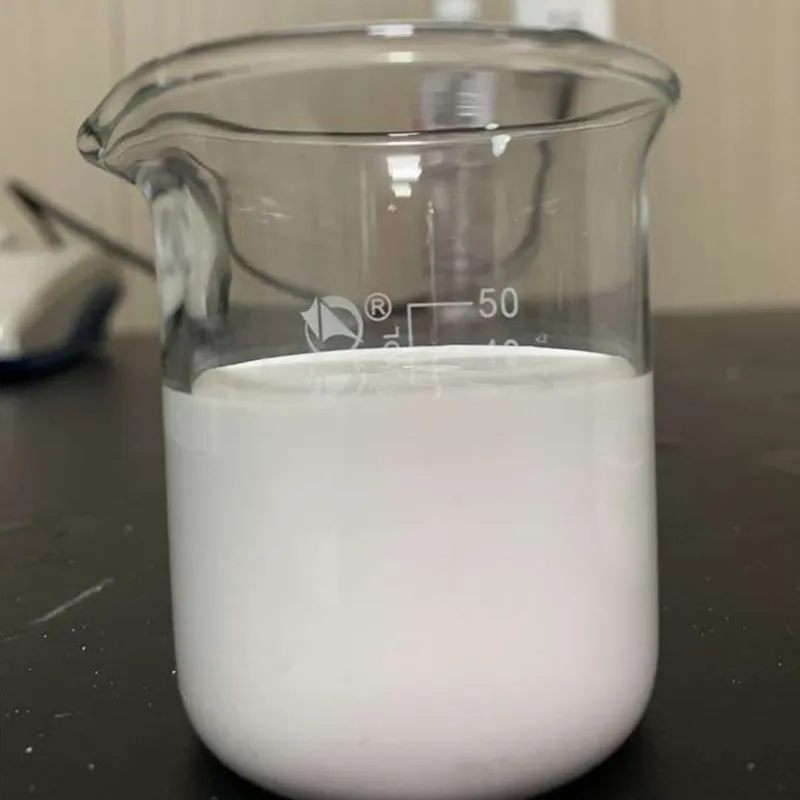
Real-World Application Cases and Customer Experience
The efficacy and reliability of DFC Chempest's spirodiclofen are validated through numerous successful applications across diverse agricultural settings globally. These case studies underscore our commitment to delivering tangible results and building lasting partnerships with our clients, demonstrating the real-world impact of our high-quality products. Our clients' success stories are a testament to the effectiveness of spirodiklofen.
Case Study 1: Citrus Mite Control in Spain
A major citrus grower in Valencia, Spain, was facing persistent infestations of citrus red mites (Panonychus citri), leading to significant defoliation, reduced fruit quality, and economic losses. Traditional acaricides were showing signs of diminished efficacy due to widespread resistance, severely impacting their yields. Upon consulting with DFC Chempest's technical team, the grower implemented a program incorporating spirodiclofen 24 SC as part of a rotational strategy during the early mite infestation period. Post-application data revealed a rapid reduction in mite populations (over 95% control within 10 days of application) and excellent residual activity, protecting new flushes of growth for up to 4 weeks. The grower reported significantly improved fruit set, better fruit quality, and an increase in marketable yield, along with positive feedback on the product's ease of use and compatibility with their existing spray equipment. This successful outcome reinforced their trust in DFC Chempest's solutions.
Case Study 2: Whitefly Management in Greenhouse Vegetables, Netherlands
A large greenhouse vegetable producer in the Netherlands struggled with severe infestations of greenhouse whitefly (Trialeurodes vaporariorum) and tobacco whitefly (Bemisia tabaci) in their high-value tomato and cucumber crops. These pests were causing significant sap feeding damage, leading to reduced plant vigor, and more critically, transmitting devastating viral diseases like Tomato Yellow Leaf Curl Virus. After a trial period with our spirodiklofen product, the farm observed a dramatic reduction in whitefly populations across all life stages, including difficult-to-control pupal stages. The product's translaminar activity proved crucial for reaching pests on the undersides of leaves, which are often missed by contact insecticides. The grower particularly appreciated the product's safety profile, allowing for re-entry intervals that minimally disrupted their harvesting schedules and did not negatively impact their established biological control agent releases, making it an ideal fit for their intensive greenhouse IPM program.
Customer Feedback: "DFC Chempest's spirodiclofen has been a game-changer for our apple orchards. We've seen a noticeable drop in European red mite pressure, and the residual control is truly impressive, lasting much longer than other products we've used. Their technical support team also provided invaluable guidance on optimal application timing and rotation, helping us maintain healthy trees and excellent yields throughout the season." - Orchard Manager, Washington State, USA.
"Our experience with spirodiclofen 24 SC has been consistently positive. It's become a cornerstone of our mite management program in ornamental nurseries. The reliability and consistency of the product from DFC Chempest gives us peace of mind." - Nursery Owner, Florida, USA.
Trustworthiness: Support, Warranty, and Delivery
At DFC Chempest, trustworthiness is built on transparency, reliability, and unwavering customer support. We understand that in agriculture, timely delivery and dependable product performance are critical for successful operations and optimal yields. Our commitment to these principles ensures that our partners can rely on us completely.
- Delivery and Lead Times: We maintain robust supply chain logistics and a vast global distribution network to ensure prompt and efficient delivery worldwide. Standard lead times for common formulations like spirodiclofen 24 SC typically range from 15-30 days, depending on the destination, customs clearance procedures, and order volume. For custom orders or large-scale projects, a detailed production and delivery schedule is provided at the time of quotation, offering full transparency. We also offer expedited shipping options for urgent requirements, understanding the time-sensitive nature of agricultural inputs. Our proactive communication ensures clients are always informed about their order status.
- Quality Assurance and Warranty: All DFC Chempest products, including spirodiclofen, are manufactured under stringent ISO 9001:2015 certified quality management systems. This certification underscores our commitment to continuous improvement and consistent quality. We guarantee our products meet or exceed the specified purity, stability, and efficacy parameters outlined in their respective Certificates of Analysis (CoA). Our warranty covers product integrity and performance when stored and used according to label instructions. In the unlikely event of a quality concern, our dedicated customer service team responds swiftly to investigate and resolve issues, typically within 48-72 hours, ensuring minimal disruption to your operations.
- Comprehensive Customer Support: Our support extends far beyond sales, forming a long-term partnership with our clients. We provide:
- Technical Hotline: For immediate assistance with product application, pest identification, formulation questions, or troubleshooting specific field issues. Our experts are just a call away.
- Agronomic Advisory Services: Expert advice on Integrated Pest Management (IPM) strategies, tailored resistance management plans, and crop-specific solutions designed to optimize yields and minimize pest impact. We offer data-driven insights and practical recommendations.
- Regulatory Guidance: Assistance with documentation and compliance for diverse global markets, helping clients navigate complex registration processes and ensuring seamless market entry.
- Post-Sales Follow-up: Regular check-ins to ensure client satisfaction, gather valuable feedback for continuous product and service improvement, and address any new challenges that may arise.
- Training and Workshops: We offer training sessions for clients and their teams on proper handling, application, and safety protocols for our products, ensuring effective and responsible use.
Frequently Asked Questions (FAQ) about Spirodiclofen
Here are answers to some common professional questions regarding spirodiclofen, addressing its technical aspects, application, and safety profiles:
-
What is the primary mode of action of spirodiclofen?
Spirodiclofen primarily acts as a lipid biosynthesis inhibitor (IRAC Group 23). It specifically targets acetyl CoA carboxylase (ACC), an enzyme critical for fatty acid synthesis in mites and insects. By inhibiting ACC, it disrupts the production of lipids essential for growth, development, and reproduction, leading to the eventual death of the pest. This unique mode of action makes it highly effective against pests that may have developed resistance to other chemical classes, making it a valuable tool in modern resistance management strategies.
-
Which pests does spirodiclofen effectively control?
Spirodiclofen is highly effective against a broad spectrum of economically important mites, including various species of spider mites (e.g., Two-spotted spider mite, European red mite, Citrus red mite), rust mites (e.g., tomato rust mite, citrus rust mite), and broad mites. It also provides good control against certain whitefly species (e.g., greenhouse whitefly, tobacco whitefly), particularly their immature stages (eggs and nymphs), disrupting their life cycle and preventing population build-up.
-
What are the common formulations of spirodiclofen available and what are their advantages?
The most common and effective formulation is the Suspension Concentrate (SC), such as spirodiclofen 24 SC, containing 240 grams of active ingredient per liter. SC formulations offer several advantages: they are easy to measure and mix with water, provide excellent suspension stability in the spray tank, minimize dust exposure during handling, and ensure uniform spray coverage on plant surfaces, leading to consistent efficacy. Other formulations like Wettable Powder (WP) may also be available, but SC formulations are generally preferred for their superior performance characteristics.
-
How does spirodiclofen fit into an Integrated Pest Management (IPM) program?
Spirodiclofen is an excellent tool for IPM due to its unique mode of action, low toxicity to many beneficial insects and predatory mites, and strong translaminar activity. It should be used rotationally with other chemistries from different IRAC groups to prevent the development of resistance in target pest populations. Its ovicidal and nymphicidal activity also helps in breaking the pest life cycle early, reducing overall pest pressure and minimizing the need for broad-spectrum insecticides, thus supporting a more sustainable approach to pest control.
-
What is the recommended re-entry interval (REI) after applying spirodiclofen?
The re-entry interval (REI) for spirodiclofen varies depending on the specific product label, local regulatory requirements, and the crop being treated. Typically, REIs can range from 12 hours to several days (e.g., 24-48 hours) to ensure worker safety. It is crucial to always consult the product label for the precise REI applicable to your specific region and crop, as well as any personal protective equipment (PPE) requirements, to ensure compliance and safety for agricultural workers.
-
What is the typical shelf life of spirodiclofen 24 SC under standard storage conditions?
Under optimal storage conditions (cool, dry place, out of direct sunlight, in original sealed container111s), DFC Chempest's spirodiclofen 24 SC typically has a shelf life of at least 2 years from the date of manufacture. We conduct accelerated stability tests and real-time storage studies to confirm this shelf life, ensuring product efficacy and stability over extended periods. Proper storage is essential to maintain the product's quality and effectiveness.
-
Is spirodiklofen compatible with other crop protection products and fertilizers in a tank mix?
In general, spirodiclofen has good compatibility with most commonly used fungicides, insecticides, and foliar fertilizers. However, compatibility can sometimes be influenced by water quality (pH, hardness) and the specific formulations of other products. It is always highly recommended to perform a small-scale compatibility test (jar test) before tank-mixing with other products, especially when unfamiliar combinations are used, to prevent potential physical incompatibility (e.g., flocculation, layering) or chemical reactions that could lead to reduced efficacy or phytotoxicity. Always refer to the product label for specific compatibility guidelines and warnings.
Authoritative References and Further Reading
To further enhance your understanding of spirodiclofen and its critical role in sustainable agriculture, we recommend consulting the following authoritative sources and academic publications:
- Insecticide Resistance Action Committee (IRAC) Mode of Action Classification: Group 23 (Lipid Synthesis Inhibitors) - Provides detailed scientific information on the mechanism of action of spirodiclofen and its importance in resistance management.
- "Spirodiclofen: A New Acaricide for Mite Control in Agriculture" - Article in Pest Management Science (Wiley Online Library) - A peer-reviewed journal article offering in-depth research and efficacy data on spirodiclofen's performance against various mite species.
- Food and Agriculture Organization of the United Nations (FAO) Plant Protection Publications - Provides guidelines and standards for pesticide quality, safety, and sustainable plant protection practices, which DFC Chempest adheres to.
- AgroPages: Global Agrochemical & Crop Protection Industry Portal - An industry-leading news and information platform offering insights into market trends, new product developments, and regulatory updates in the agrochemical sector.
-
Uncover the Benefits of Sodium ChlorateNewsJun.24,2025
-
Sodium for Sale: Your Essential ResourceNewsJun.24,2025
-
Raw Materials in Chemical IndustryNewsJun.24,2025
-
Potassium Hydroxide: Versatile Solutions for Your NeedsNewsJun.24,2025
-
Organic Pesticides and Chemical Raw Materials: Building a Sustainable FutureNewsJun.24,2025
-
Discover Premium Chlorine Tablets TodayNewsJun.24,2025
-
Zinc for Sale: Your Essential ResourceNewsJun.04,2025
